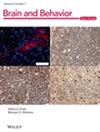Impact of Etiology, Thrombectomy Techniques, and Lesion Localization on Endovascular Treatment Success in Acute Basilar Artery Occlusion: A Single-Center Retrospective Study
Abstract
Background
Basilar artery occlusion (BAO) is a rare but severe form of large vessel occlusion associated with high rates of mortality and morbidity. Endovascular treatment (EVT) has become the primary therapeutic option; however, its efficacy and procedural risks in BAO remain controversial. This study aims to evaluate the clinical and procedural outcomes of EVT in BAO and to compare these results across different etiological subgroups.
Methods
We retrospectively analyzed 23 patients who underwent EVT for BAO between December 2019 and December 2024. Demographic data, procedural times, recanalization success rates, complications, and functional outcomes assessed by the Modified Rankin Scale (mRS) at three months were evaluated. The patients were categorized into three groups based on the etiology: large artery atherosclerosis, cardioembolism, and undetermined causes.
Results
Successful recanalization (mTICI 2c-3) was achieved in 100% of cases. The mean symptom-to-recanalization time was the longest in the large artery atherosclerosis group (345 ± 165.38 min). At the three-month follow-up, 47.8% of patients had a good functional outcome (mRS 0–2), and 34.1% achieved an excellent outcome (mRS 0–1). The cardioembolism group had lower mean mRS scores compared to other groups. Intracranial hemorrhage occurred in 13% of cases, with 8.7% classified as symptomatic.
Conclusion
The mean 3-month mRS scores were lower in the cardioembolic etiology group. Although the combined technique group had longer recanalization times, they exhibited lower mean 3rd month mRS scores. As the number of randomized controlled trials increases, it is expected that EVT in BAO will be recommended with higher levels of evidence in the guidelines.


 求助内容:
求助内容: 应助结果提醒方式:
应助结果提醒方式:


